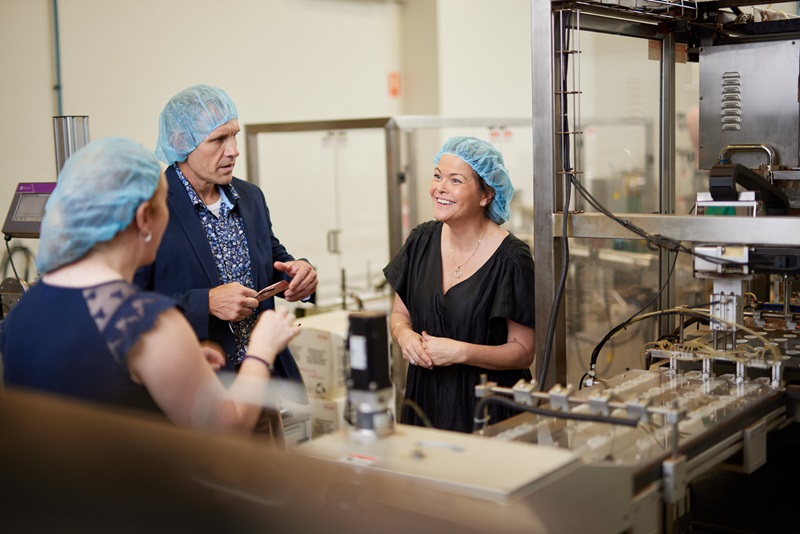Science, technology and research are key drivers of growth for small to medium enterprises (SMEs). However, many lack the resources to pursue research projects alone. Here are five measures an SME can implement in their business to get the most out of their research and development collaborations.
Key points
- Science, technology and research are key drivers of growth for small to medium enterprises (SMEs). However, many lack the resources to pursue research projects alone.
- Our survey of 800 Australian SMEs found that businesses that collaborate were more successful than those that didn’t.
- There are five measures an SME can implement in their business to get the most out of their research and development collaborations.
Small and medium sized businesses (SMEs) are a major player in Australia’s business landscape. They employ over 7.4 million people and make up 98 per cent of all businesses. Understandably, a resilient and competitive SME sector has many flow-on impacts for our economy.
Australia is also home to many world-leading research organisations. Yet, data indicates that only a small percentage of SMEs look to our research organisations for support with innovation.
Collaborating with research organisations can give SMEs a competitive edge. Such partnerships help them tap into resources, skills, facilities and technologies they need to innovate and grow their business.
Still, there can be barriers to engaging in research collaborations. Our survey of more than 800 Australian SMEs explored the key challenges that SMEs face when starting such projects. Critically, the survey found those who collaborate on research and development (R&D) projects were more successful than those that didn’t. And some businesses were better prepared to collaborate than others.
So, how do you know if your SME is ready to work with a research organisation?
Five elements of successful R&D collaborations
Effective research collaborations require more than just the desire to work together.
We gathered insights from research partners at RMIT, University of Queensland and Queensland University of Technology to identify what factors determined the success of a research partnership.
We found five, and together they contribute to the overall ‘Collaboration Readiness’ of a business.
Knowing your collaboration readiness level can help your business prepare for a successful research partnership. And whether you’re a start-up founder or a seasoned entrepreneur, understanding and investing in these five factors can take your business to the next level.
- Find an executive-level champion: Having executive support is an important step in making sure a collaborative research project is well resourced. Businesses are better equipped for long-term research partnerships when they have one or more executive ‘collaboration champions’. A champion should be able to communicate effectively, have vision and be able to motivate others across the business.
- Focus on the end, at the start: Start by having a clear idea of what your business needs from the collaboration. How will a research project help to achieve your business goals? Do you need access to large-scale equipment to trial a new process with minimal business disruption? Or do you need specialist expertise to develop products faster? Businesses that ensure achievable outcomes and responsibilities are understood, and agreed upon, before starting a project are more likely to be successful.
- Be open with knowledge sharing: Partnerships work best when the SME and researchers work together to create, share and use knowledge. You can build trusted partnerships by communicating often. However, being open in your communication doesn’t mean you need to share everything. It is important that you understand how to protect all intellectual property (IP) that has commercial potential. You should explicitly address IP through co-signed agreements (such as a non-disclosure agreement) before you share information. At the very least, agree who owns the IP developed during a collaboration and how it will be licensed. Read IP Australia’s five tips for protecting your IP and IP Management for Business-Research Collaborations to learn more.
- Resources and capabilities: It is important you make sure that you have the funding, administrative support and staff available to support long-term research partnerships. You may decide to start with lower-risk, small, defined projects to trial a partnership. You could access funding opportunities or explore your eligibility for the Research and Development Tax Incentive to offset the financial costs of your investment. You may choose to explore free training programs to upskill your team, such as our Innovate to Grow program. After you have successfully delivered some smaller collaborations, you will be confident taking on longer, more ambitious collaborations backed by additional internal or external resources.
- Embed collaboration within the business via systems and processes: Are your business systems and processes set up to handle ongoing collaborations? You may need to make improvements in your systems such as setting up project management processes, developing standardised agreements and project templates, and monitoring and evaluation systems. These can all help fast-track future collaborations.
Find out if your business is ready to collaborate by using CSIRO’s Collaboration Readiness Tool.
This is an excerpt from ‘Ready, set, collaborate: Five ways to boost your SME’s research and development potential’ by CSIRO. Read the article in full here.





